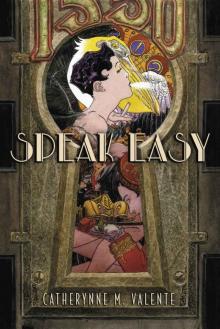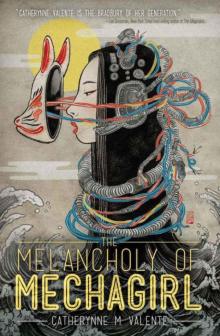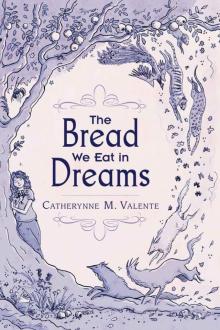


Feast
Anissa Helou
2. Meanwhile, put the meat in a pot, add 4 cups (1 liter) water, and place over medium heat. As the water is about to boil, skim the froth from the surface, add the cinnamon sticks and salt to taste. Cover the pan and let bubble gently for 45 minutes, or until the meat is tender.
3. Take the meat out of the broth and cut into bite-size pieces. Strain the broth into a clean shallow pot and add back the pieces of meat. Remove the chickpeas with a slotted spoon and add to the meat. (At this point you can set the meat and chickpeas aside until you are ready to serve the fatteh. I often prepare the meat and chickpeas the day before and reheat and assemble the dish just before serving.)
4. Preheat the oven to 425°F (220°C).
5. Spread the pine nuts on a baking sheet and toast in the hot oven for 5 to 6 minutes, or until golden brown. Lay the pita disks on another baking sheet and toast in the oven until golden brown. Let the nuts and bread cool.
6. Mix together the garlic, yogurt, and salt to taste.
7. Break the toasted pita into bite-size pieces and spread over the bottom of a serving platter. Spread the meat and chickpeas over the bread. Sprinkle 2 or 3 tablespoons lamb broth over the meat and chickpeas and cover with the yogurt. Scatter the sautéed pine nuts all over the yogurt. Serve immediately.
Egyptian Fattah
FATTAT LAHM
EGYPT
Fattah, as it is pronounced in Egypt, is quite different from the Lebanese, Syrian, or Saudi fatteh. It is often made with sheep’s trotters and has added layers of boiled rice and tomato sauce, making for a much more substantial version. It is prepared for Eid al-Adha (the feast of the sacrifice) as well as to celebrate the arrival of a new baby as part of an ‘Aqeeqah, which is a banquet prepared for family and friends to celebrate a newborn. In Islam the ‘Aqeeqah is the animal sacrifice that is offered on behalf of the newborn on the seventh day after birth. The custom was practiced by Arabs before the advent of Islam.
SERVES 4 TO 6
4 lamb shanks (3 pounds 5 ounces/1.5 kg total)
2 cups (400 g) short-grain rice, Egyptian if you can find it
2 tablespoons (30 g) unsalted butter
Sea salt
FOR THE TOMATO SAUCE
1 tablespoon (7 g) unsalted butter
2 cloves garlic, minced to a fine paste
One 14-ounce (400 g) can chopped tomatoes
2 teaspoons tomato paste
2 tablespoons vinegar
Sea salt and finely ground black pepper
3 cups (24 ounces/750 g) Greek yogurt
4 cloves garlic, minced to a fine paste
Sea salt
4 medium pita breads, split into 8 disks and toasted or fried in vegetable oil until golden
¼ cup (40 g) pine nuts, toasted in a hot oven for 5 minutes
1. Put the meat in a large pot and cover well with water. Place over medium heat and skim froth that rises to the surface as the water is about to boil. Reduce the heat to low, then cook, covered, for 1 hour 30 minutes, or until the meat is very tender. Take the meat off the bone and return to the broth to keep hot.
2. Rinse the rice under cold water and put in a pan. Add 4 cups (1 liter) water, the butter, and salt to taste and bring to a boil over medium heat. Reduce the heat, cover, and simmer for 15 minutes, or until the water is fully absorbed. Wrap the lid with a clean kitchen towel, replace over the pan and take off the heat.
3. To make the tomato sauce: Melt the butter in a saucepan over medium heat. Add the garlic and sauté until fragrant. Add the chopped tomatoes, tomato paste, and vinegar and season with salt and pepper to taste. Cook for another 15 minutes, stirring regularly, until the sauce thickens.
4. Mix the yogurt with the minced garlic and season with salt to taste.
5. To assemble the fattah: This should be done just as you are ready to serve it. Spread the toasted bread over the bottom of a shallow serving bowl. Cover with the rice. Scoop the lamb out of the broth with a slotted spoon and scatter over the rice. Drizzle with the tomato sauce. Cover with the yogurt mixture and sprinkle the toasted pine nuts all over. Serve immediately.
Syrian Fatteh
FATTET AL-MAKDUSS
The first time I tasted this fatteh was at Naranj, a large, glitzy restaurant converted from an old house just off Straight Street in Damascus with a delightful roof terrace. The waiters wore elegant modern takes on the traditional ‘abaya (long robe-like garment) and the menu also offered a modern take on regional specialities including this fatteh that is my favorite among all the variations. The bread is traditionally fried in olive oil but I prefer to brush it with olive oil and toast it in the oven. As for the meat element here, it is minced and stuffed inside baby eggplants that are cooked in a lamb broth before being layered in between the bread and the yogurt.
SERVES 4
FOR THE LAMB BROTH
1 pound 1 ounce (500 g) lamb from the shanks, cut into medium-size chunks
1 cinnamon stick
1 large onion (7 ounces/200 g), peeled and quartered
Sea salt
3 large ripe tomatoes, peeled, deseeded and finely chopped
FOR THE STUFFED EGGPLANTS
6½ tablespoons (100 g) ghee or unsalted butter
⅓ cup (50 g) pine nuts
10½ ounces (300 g) freshly minced lean lamb, from the shoulder or neck (either ask your butcher to mince the lamb or do it yourself using the fine attachment on a meat grinder)
½ teaspoon ground allspice
½ teaspoon ground cinnamon
Sea salt and finely ground black pepper
2 pounds 2 ounces (1 kg) Japanese eggplants, trimmed and cored
TO FINISH
3 medium pita breads
Extra-virgin olive oil to brush the bread
3 cups (24 ounces/750 g) Greek yogurt
2 tablespoons tahini
2 cloves garlic, peeled, minced into a fine paste
A few sprigs mint, leaves only, finely chopped
1. For the lamb broth: Put the meat from the shanks in a large saucepan and cover with water. Place over medium heat and bring to a boil, skimming any froth that rises to the surface. Add the cinnamon stick, onion, and salt to taste. Reduce the heat to medium low. Cover the pan and let simmer for 30 minutes or until the meat is half done. Add the chopped tomatoes and let simmer for 30 more minutes, or until the meat is done. Keep hot in the pan.
2. To make the stuffed eggplants: Put half the ghee in a frying pan and place over medium heat. Add the pine nuts and sauté, stirring constantly, until the nuts are golden brown. Remove with a slotted spoon onto a plate. Add the minced lamb. Cook, stirring the meat and mashing it with a wooden spoon to break up any lumps, until all traces of pink are gone. Add the allspice, cinnamon, and salt and pepper to taste. Return the toasted pine nuts to the pan, keeping some for garnish, and mix well. Let the meat and nut mixture cool before using to stuff the eggplants.
3. Cup your hand around a cored eggplant, holding it upright, and scoop a little stuffing with your other hand or using a very small spoon, and push the stuffing inside the eggplant, using either the narrow spoon or your finger to force it down. Shake the eggplant downward halfway through to make sure the stuffing has gone to the bottom of the eggplant. Stuff the remaining eggplants in the same way.
4. Put the remaining butter in a saucepan and place over medium heat. When the butter has melted, add the stuffed eggplants and sauté until they turn pale in color. Add 1½ cups (375 ml) of the meat broth to the pan. Turn the heat to medium low and let simmer for about an hour, or until the eggplants are done. Keep them hot while you prepare the rest of the dish.
5. Preheat the oven to 400°F (200°C).
6. Tear the pita breads open at the seam, brush with a little olive oil, and toast in the oven until golden brown. Remove onto a wire rack to cool.
7. Mix the yogurt with the tahini, garlic, and mint. Spread out the toasted bread over the bottom of a deep serving dish. Remove the meat from the hot broth and spread over the bread. Then arran
ge the stuffed eggplants over the bread and meat and cover with the yogurt. Garnish with the reserved toasted pine nuts and serve immediately.
Arabian Meat and Vegetable Stew over Crispy Bread
THARID
QATAR | UNITED ARAB EMIRATES | BAHRAIN
Tharid is the Arabian Gulf version of the Levantine fatteh, made with a lot more bread and topped with a hearty meat and vegetable stew. It is said to have been the Prophet Muhammad’s favorite dish, and is a staple during Ramadan, being an essential part of the iftar meal. Whereas bread is an equal component of fatteh, the whole point of tharid is that bread be a substantial part of the dish. In the Gulf, the bread used is regag but this is not readily available in the United States. The nearest you can get to it is by toasting markouk (“handkerchief bread”) or very thin lavash until it is completely crisp, then breaking it up and using it as with regag. Both markouk and lavash will use more broth to soften, so make sure you add enough broth to soften the bread before topping it with the meat and vegetables. The cooking time and the amount of water needed will change depending on the meat you use. Last time I made tharid, I used the meat from a young ewe, which needed longer cooking.
SERVES 4 TO 6
4½ pounds (2 kg) boneless lamb shoulder or leg, or neck fillets (see Note)
2 ounces (60 g) caul fat, chopped
2 large tomatoes (14 ounces/400 g)
4 inches (10 cm) fresh ginger, peeled and cut into chunks
2 cloves garlic, peeled
1 medium onion (5 ounces/150 g), peeled and quartered
2 tablespoons tomato paste
4 black dried limes, pierced in a few places
2 bay leaves
2 dried chilies
2 tablespoons b’zar (Arabian Spice Mixture)
1 tablespoon ground cumin
1 teaspoon finely ground black pepper
¼ teaspoon ground cardamom
¼ teaspoon whole cloves
18 baby carrots
18 baby potatoes
18 baby zucchini
8 regag breads (or 2 to 3 handkerchief breads, toasted until crisp but not browned)
1. Put the meat, caul fat, and 2½ quarts (2.5 liters) water in a large pot and bring to a boil over medium heat. Drain the broth and pour the same amount of clean water over the meat. This will ensure you have a clean-tasting broth.
2. Put the tomatoes, fresh ginger, garlic, and onion in a food processor and process until completely pureed.
3. Add the tomato puree to the lamb broth along with the tomato paste, dried limes, bay leaves, chilies, and spices and let bubble for 1 hour, until the lamb is tender (see Note).
4. Add the carrots and potatoes and cook for 10 minutes. Add the zucchini and cook for 10 more minutes.
5. Break up 2 sheets of regag or 1 sheet of toasted handkerchief bread in a shallow serving dish. Pour enough lamb broth over the bread to let it become soft but not soupy. Spread another layer of broken bread and add more broth. Make another layer, softening the bread with broth until you have a fairly thick layer of moistened bread, about 2 inches (5 cm) deep. Arrange the meat and vegetables over the bread and serve immediately.
NOTE: You could also make this with veal or ewe (same cuts as above). If you do, increase the water in the broth to 3 quarts (3 liters), and cook the meat for 2 hours as it will need longer cooking to become tender.
Sweet Recipes Using Bread
* * *
The Bread of the Harem
AYSH EL-SARAYA
LEBANON
The name of this Lebanese sweet is somewhat confusing. Saraya and seraglio mean both harem and a sultan’s palace. I am going for the harem translation as I cannot imagine a bread pudding being a sweet for kings, given what a modest ingredient bread is. It makes more sense to think of it as a sweet for concubines. I am being facetious here as I don’t know much about the origins of this dessert apart from the fact that it is totally luscious despite its being made from pretty simple, basic ingredients such as bread and sugar. The cream makes it luxurious and the slivered pistachios add a welcome crunch.
SERVES 4 TO 6
One day-old 8-inch (20 cm) round loaf white bread (about 14 ounces/400 g)
1¼ cups (250 g) raw cane sugar
1 teaspoon lemon juice
¾ cup (180 ml) boiling water
1 tablespoon orange blossom water
1 tablespoon rose water
1¼ cups (300 g) Arabic clotted cream or English clotted cream
2 tablespoons slivered pistachios, for garnish (see Note)
1. Trim off and discard the crusts of the bread (or reserve it for making breadcrumbs). Tear the bread into rough 1-inch (2.5 cm) pieces.
2. Combine ¼ cup (60 ml) water, the sugar, and lemon juice in a medium saucepan. Bring to a boil over medium heat and cook, stirring constantly so that the sugar does not recrystallize in places, until the syrup has caramelized to a golden brown color, about 15 minutes; be careful not to burn it. Gradually add the boiling water, stirring with a long-handled wooden spoon; the syrup will splatter when you add the water, so make sure you do this very slowly and cautiously. Take off the heat and add the orange blossom water and rose water.
3. Add the bread to the syrup and cook over medium heat, pressing down on the bread with the back of the spoon to mash it up and help it soak up the syrup, for 5 to 10 minutes, or until it has absorbed the syrup.
4. Spread the bread into an even layer in an 8-inch (20 cm) round serving platter. If there is any syrup left in the pan, pour it over the bread. Let cool for about 20 minutes. Then, spread the cream over the bread, leaving a little of the edge showing. Garnish with the slivered pistachios and serve straightaway. If you want to refrigerate it, reserve the pistachio garnish until just before serving.
NOTE: Pistachios are used as a garnish, for both sweet and savory dishes, throughout the Middle East. In the Levant they are used in mostly ground form, whereas in Iran they are slivered into beautiful green sticks to add color and crunch to both rice dishes and desserts. You can, of course, cut whole ones into slivers, but it is much easier to source ready-slivered pistachios from Persian or Middle Eastern stores.
Egyptian Bread “Pudding”
UMM ALI
EGYPT
Umm ali is the classic Egyptian dessert, an Arab version of bread pudding made with layers of very thin crisp flatbread and toasted nuts soaked with sweetened milk. I use a larger quantity of nuts than most people to give the pudding more crunch and I omit the melted butter. I also add a little orange blossom water to the milk to add an intriguing flavor note. Egyptians use reqaq (which means “flattened very thin”) bread, which is not widely available in the West, so I suggest using toasted markouk (“handkerchief bread”) or the thinnest lavash you can find, although I find it ironic that you first toast bread in order to then soak it in milk. Umm ali is best served freshly baked so that the bread retains a slight crunch, and it is a good idea to time it so that it can be served straight out of the oven.
SERVES 4 TO 6
7 ounces (250 g) markouk (handkerchief bread), about 1¾ sheets
2⅓ cups (350 g) mixed nuts (pistachios, hazelnuts, peanuts, cashews, almonds, and walnuts)
3 cups (750 ml) organic whole milk
½ cup (100 g) raw cane sugar
1 tablespoon orange blossom water
¼ cup (50 g) golden raisins, soaked for about 1 hour in water
Crème fraîche, for serving
1. Preheat the oven to 400°F (200°C).
2. Lay one sheet of markouk over a large baking sheet and toast for about 8 minutes, until golden. Remove from the baking sheet and lay the remaining sheet on the baking sheet. Toast until crisp and golden. Keep the oven on.
3. Break the toasted bread into medium pieces and arrange half of the toasted bread in a 2½-inch (6 cm) deep oval baking dish about 11 x 6 inches (27.5 x 15 cm).
4. Spread the nuts on a large baking sheet and toast in the oven for 10 to 12 minutes, or until golden brown. Remov
e from the oven and let cool.
5. Put the milk and sugar in a saucepan and bring to a boil over medium heat, stirring every now and then. Remove from the heat and add the orange blossom water.
6. Drain the golden raisins and spread half of them over the bread. Spread half the nuts over the raisins and cover with the remaining bread. Pour the hot milk over the bread and scatter the remaining raisins and nuts all over the top.
7. Bake for about 20 minutes, or until the milk is almost completely absorbed and the bread is a little crisp around the edges. Serve immediately with crème fraîche for each diner to dollop over their umm ali.
The Whole Beast
Eid al-Fitr (the feast of breaking the fast) marks the end of Ramadan and it is when Muslims all around the world, at least those who can afford it, buy a whole sheep or goat, or even a baby camel, to slaughter and give thanks to Allah for having marked the end of another year’s fast. Some families will use part of the animal for their own festive meals and distribute the rest to those less fortunate, while others will distribute the whole animal, or more than one animal, depending on their means.
Eid al-Adha (the feast of the sacrifice), which comes about two months after Eid al-Fitr, is another occasion for buying whole animals, but this time, the meat is usually feasted upon by family and friends, although many will also share some with those in need.
In the early days of Islam, when the Prophet Muhammad lived in Mecca, an oasis in the Arabian desert, his diet and that of those around him consisted of mostly meat, dairy, and dates. The meat they ate daily would have been cuts that they grilled, stewed, or boiled, but when they celebrated special occasions or received important guests, they roasted whole lamb, goats, or baby camels.
Serving a whole animal, whether it is milk-fed or fully grown, is still very much a part of Muslim culinary tradition, whether to honor guests, to welcome family members returning from long trips abroad, or to celebrate religious or special occasions. Whole animals are also on the menu for large family gatherings on weekends—in the Arabian Gulf, Friday is the day when the whole family gathers to eat together and enjoy each other’s company. In cities, it will be lamb or goat, but in the desert, the weekend family meal of Gulf Bedouins will often consist of a whole roast baby camel served on a bed of rice.














